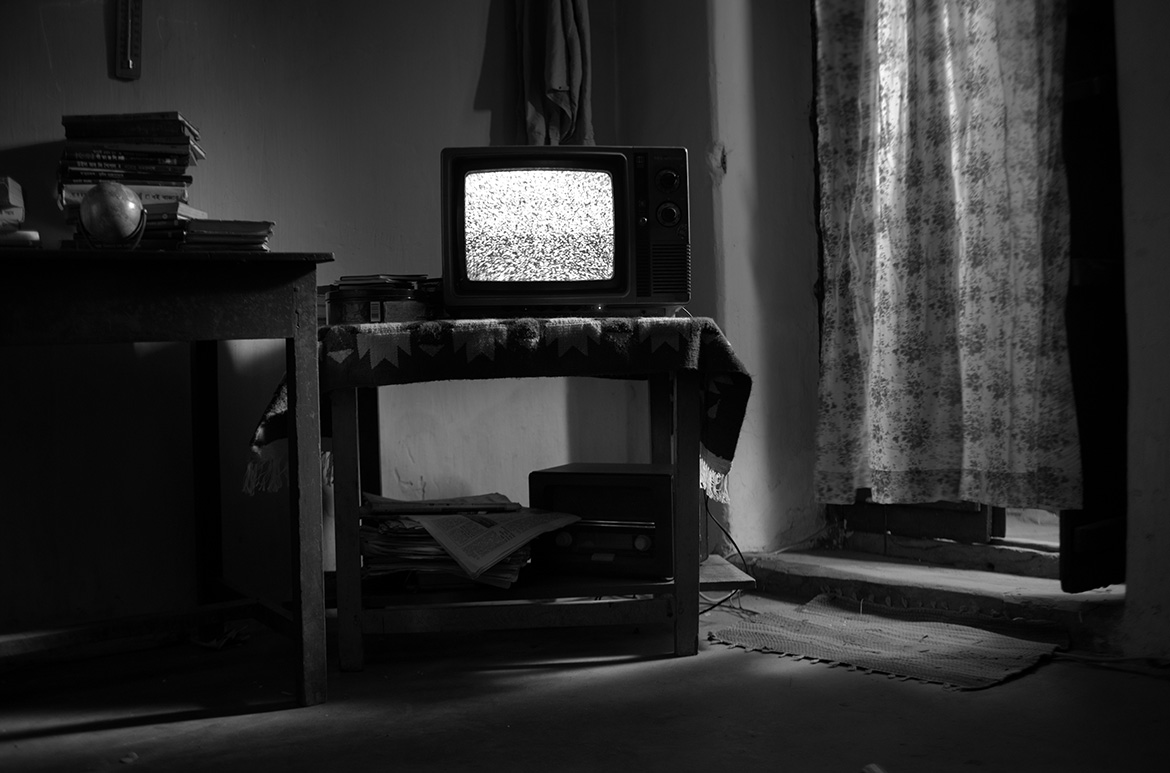Munem Wasif’s intimate and mysterious encounters in photography and film are created through an unyielding attention to atmosphere, texture, rhythm and movement to capture enigmatic locations and intricate narratives.
Kheyal 2015–18 paces through the environment and identities of Old Dhaka, whether real or imagined. Shot over two years, but in development for 17, the work embodies an uncertain, but alluring, return to a place from Wasif’s past:
The question is why I went to Old Dhaka again to work. I thought about it a lot. I think there were many unresolved things. I was unable to speak about so many complex emotions. Immaterial things. Stillness in time. Memories of my childhood. It took me almost a decade to realise that architecture, history, sense of community, colloquial language, all these things in Old Dhaka were just creating an atmosphere. I was actually interested in a particular state of mind. A sense of magic realism. Certain characters. Obsessions. Memories. Which Old Dhaka allows to exist.1
Munem Wasif discusses his work
SUBSCRIBE to QAGOMA YouTube to be the first to go behind-the-scenes at Gallery events and exhibitions
Old Dhaka is the historic city, now only a small quarter of the Bangladeshi capital, which is one of the largest and most densely populated cities in the world. The old city survived Buddhist, Hindu and Muslim rulers before reaching its zenith under Mughal rule in the seventeenth century, later becoming a seat of colonial power and subsequently a site of violence during the Independence War of 1971. Living amongst the grandeur of neglected Mughal architecture are dynamic social groups and spontaneous neighbourhoods that have evolved into an organic urban web, creating a dramatic hierarchy of spaces around courtyards, narrow lanes and bustling bazaars.
Kheyal is imbued with unique sensibilities of music, literature and architecture, together with the connection between land and water that pervades the city. Set in and around the neighbourhoods of Bangla Bazar and Farashganj, it takes us through hidden corridors and empty architecture, crossing shadows in alleyways and confronting the suddenly changing street cultures and ethnic quarters of the city. The camera moves between the inner and outer spaces of the neighbourhoods, slowly tracking between private rooms and outdoor areas with glimpses of busy streets.
Related video: Artist Stories


Within the cramped, communal arteries are spaces of retreat and respite, where Wasif reveals withdrawn characters in ways that conjure the surreal and magic nature of life that survives in the claustrophobic confines of the old city. He shows the characters ‘lost in certain mental states and found in other magical situations’, where they are ‘tethered to a singular rhythm of their own making’.2 Osman Ali revels in playing music though he longs to return to his village, the elderly Dadi stares motionless through a window, and the young Nitu eats pomegranate and skips on rooftops, while we follow Ranju through dark and strange dreamlike encounters. Wasif describes his method, where some of the characters are real and others found, as related to Bengali bicchinno poddomala (disjointed verses), and so the film travels seamlessly between fiction and documentary, eluding a singular narrative.
Stay Connected: Subscribe to QAGOMA Blog
Kheyal navigates between the conscious and subconscious, revealing the artist’s own nostalgia and desire to transcend his circumstances to find an intensely different rhythm of life. Movement and sound are nuanced and intimate — an old typewriter’s keys are struck, instruments are played, food is cooked, and wildlife rummages on the city’s edge — recalling the hovering sounds and layering of repeated vocals in the form of Hindustani classical music known as ‘Kheyal’.3
Within the ambit of its many narratives, both real and imagined, Munem Wasif’s Kheyal envelops the viewer in the atmosphere and sensory experiences of Old Dhaka. It is a window on a certain time and place, and embodies a discovery of magic realism.
Tarun Nagesh is Curator, Asian Art, QAGOMA
Endnotes
1 Munem Wasif, email to the author, 26 April 2018.
2 Munem Wasif, email to the author, 1 May 2018.
3 For Wasif, the literal and musical meaning of ‘Kheyal’ (originally derived from the Arabic word ‘Khyal’ or ‘Khayal’, meaning fiction or imagination) acts as a metaphor for both the hovering nature of the characters in the film, and his longing to return to Old Dhaka; Munem Wasif, email to the author, 11 June 2018.
Subscribe to QAGOMA YouTube to be the first to go behind-the-scenes / Watch or Read more about Asia Pacific artists
Buy the APT9 publication
APT9 has been assisted by our Founding Supporter Queensland Government and Principal Partner the Australian Government through the Australia Council, its arts funding and advisory body, and the Visual Arts and Craft Strategy, an initiative of the Australian, State and Territory Governments.
Feature image detail: Munem Wasif Kheyal (still) 2015-18
#MunemWasif #APT9 #QAGOMA

